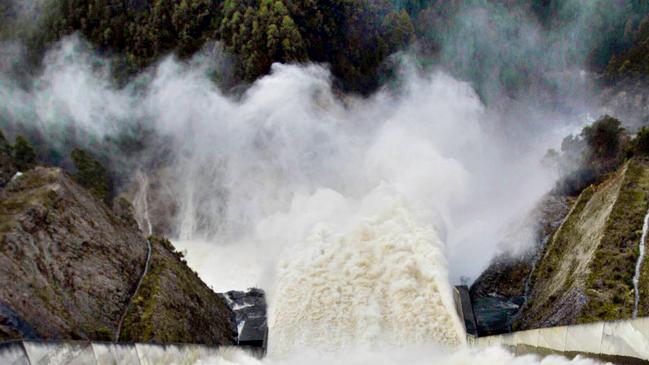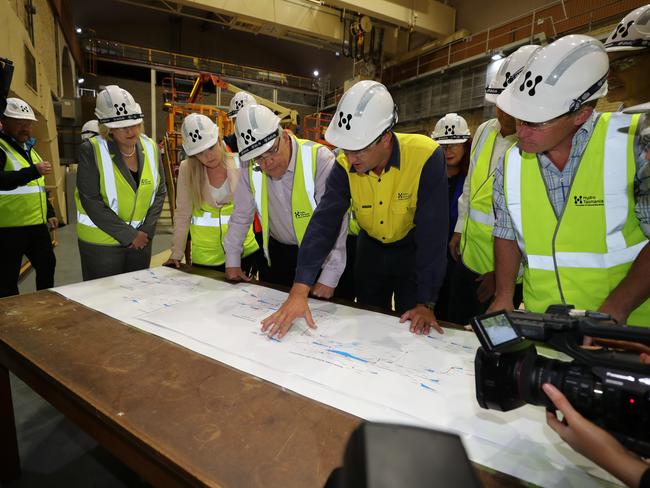Talking Point: Project Marinus not our salvation
Hydro paid through the nose for the first cable and warns it has not learnt its lesson with the second on the drawing board, writes John Lawrence.
Opinion
Don't miss out on the headlines from Opinion. Followed categories will be added to My News.
- $3.5B Project Marinus cable a huge responsibility
- At last, the right Bill, at the right time
- Government has shifted housing safety net to landlords
PROPONENTS of Project Marinus either suffer from historical amnesia or consciously ignore deeds of their predecessors.
The unbundling of Hydro into generation, transmission and retail businesses was accompanied with the overriding ethos at the time that the private sector was needed, either via an outright sale or via partnership arrangements, to make moribund government businesses more efficient.
For 20 years or so our state’s energy businesses have largely remained in public hands. Tasmanians have a special attachment to Hydro. We refrained from selling grandma as many others did, but we have outsourced lots of services associated with her care.

At times however, it has been difficult to distinguish a burglar in a suit from a service provider.
Basslink, originally floated as a $450 million project in 2000 morphed into $850 million by the time contracts were finalised almost three years later. Three more years elapsed before project completion. The final cost was $875 million.
At the end of the 25-year contract in 2031, Hydro will have paid for the interconnector almost four times over yet it still won’t own it.
The project would never have proceeded when project costs doubled but for the fact Hydro had taken out contracts to hedge interest rates before finalisation of the deal. Abandoning the project would have meant having to ‘fess up and fork out considerable amounts to close out the hedges. Ouch. Better to proceed and keep them hidden.

In the early 2000s, treasurer and subsequent premier Lennon was on a rampage. Not only would Tasmania get an electricity interconnector but also a gas pipeline.
Talk of Marinus and green hydrogen has a deja vu feel.
Hydro was instructed to enter a joint venture with Duke Energy in 2000. Converting the Bell Bay power station from oil to gas and adding a further three portable generators was enough of a carrot for Duke Energy to proceed with a pipeline via its wholly owned subsidiary Tas Gas Pipeline. When the cost of Basslink doubled Duke felt sure it was on a winner as Basslink was unlikely to proceed, potentially making the pipeline valuable. They spent $450 million in 2002. Hydro signed a Pipeline Capacity Agreement to guarantee revenue flow for the Tas Gas Pipeline.
But Basslink did proceed, ironically because the final business case assumed large amounts of electricity produced from the Bell Bay gas fired power station would allow surplus energy to be exported. That was the deal clincher This hasn’t eventuated. Basslink has been mainly used to import electricity. It will never make a profit. Electricity generated from gas is expensive. The business case also ignored declining hydro inflows due to climate change, preferring instead to use long run historical averages.
Hydro’s joint venture with Duke was abandoned in 2006. The value of its pipeline plummeted, cushioned only by the existence of the Pipeline Capacity Agreement. The Pipeline Capacity Agreement still exists. It will be renewed in 2022. Hydro doesn’t want it. The government requires it. It costs Hydro between $10 and $15 million per year judging by the notes in Hydro’s financial relating to onerous contracts. It is in effect a subsidy to the large gas users Grange Resources at Port Latta and Bell Bay Aluminium. Without Hydro’s reluctant benevolence, Tas Gas Pipeline now owned by Palisade Investment Partners would need to write back the value of its pipeline or massively increase gas charges to other major users.
Palisade is also the recipient of another government directed handout from Hydro. It has agreed to a long-term deal to buy renewable energy certificates from the Granville Harbour Wind Farm now owned by Palisade.

With the forward price for certificates falling, Hydro is committed to paying well above market price for the certificates. Current indications from Hydro’s financials are this will cost Hydro between $15 and $20 million per year. Palisade can boast to potential investors that its renewable energy fund (which includes the Granville wind farm) is making a 15 per cent return per year. It will only create 10 direct jobs.
Energy policy in Tasmania has enriched a few at the expense of the majority. The business case for Basslink was dodgy. It will cost $1.5 billion more than if we had built it ourselves. The converted Bell Bay Power station quickly became an expensive white elephant. The newer Tamar Valley gas fired power station acquired by Hydro from Aurora Energy for $335 million is now worth $30 million.
The Pipeline Capacity Agreement is a constant and costly reminder of past government interference, which shows no signs of slowing as Hydro is forced to help investors secure a 15 per cent return on new projects via offtake arrangements. Our big chance for some good fortune disappeared when the carbon tax was removed by the current government’s federal colleagues.
Somehow, we’re supposed to gloss over what’s happened and blithely accept Project Marinus as the path to eventual salvation. It’s not.
Tasmanian John Lawrence is an economist.


